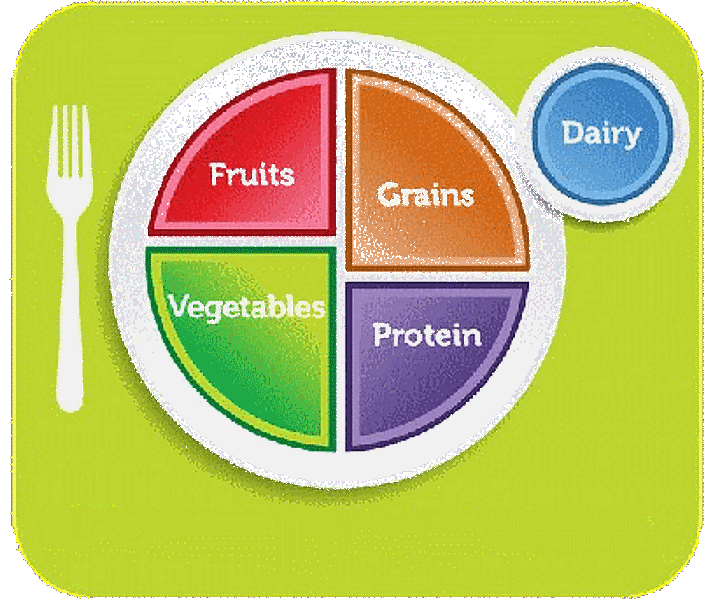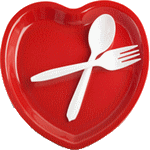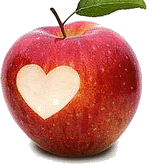Fuel For Thought
 A bowler’s body is the foundation of the physical game. While there are many areas that impact a bowler’s performance, they have to establish a well-balanced, healthy, high performance body. Building the body into a coordinated machine that performs reliably includes building it down to the cellular level. To develop reliable body functions, a bowler needs to understand how to ensure that process through a proper diet.
A bowler’s body is the foundation of the physical game. While there are many areas that impact a bowler’s performance, they have to establish a well-balanced, healthy, high performance body. Building the body into a coordinated machine that performs reliably includes building it down to the cellular level. To develop reliable body functions, a bowler needs to understand how to ensure that process through a proper diet.
The physiological conditioning, strength, and flexibility has to start with a well engineered fuel source. The creation of this fuel source depends almost entirely on the nutritional habits of the bowler. While many elements impact performance, this area is often neglected.
From an athlete’s point of view, bowling is similar to other sports. Good nutritional habits are key to a bowler’s performance.
Healthy nutritional habits include not only the proper foods and drink, but the quantity as well. People, in general, have adopted eating as a habit or as entertainment rather than supplying the body with life sustaining fuel. It is basic to your well being to eat prior to when you are hungry, and not eat when you are comfortable.
have adopted eating as a habit or as entertainment rather than supplying the body with life sustaining fuel. It is basic to your well being to eat prior to when you are hungry, and not eat when you are comfortable.
A good approach is to eat two to three hours prior to bowling. You should avoid eating until you are full or overfilled, as well as bowling on an empty stomach. Not too full, and not too empty. You can snack on fruits and protein bars for energy, and drink water to keep hydrated during your physical activity.
Think of your body as an engine, and food as its source of fuel. As the engine runs, fuel is converted to operate it in a manner that is efficient and effective. Food and fluid provides your supply that can provide a high energy value when planned well. The more active your engine, the more fuel you expend, and the more refueling is required. If your engine runs low and then out of runs out of energy, there is a resultant decline in efficiency and eventually stops running. The same is true for the human body, although it is a bit more complicated than the family car. Just as a car operates better with a regular oil change and premium gas, the human body functions more efficiently when fueled by the proper energy source.
Your body requires a specific type and amount of fuel. Peak athletic performance is contingent upon an ample, but not an over abundant supply of fuel. With it, you can assure yourself the likelihood of maintaining a well-oiled and supercharged engine. A decline in required energy will trigger a diminished level of performance.
What Kind Of Energy Do I Need?
 Your fueling needs are really quite simple. You need carbohydrates, fats, protein, and plenty of water. Those are the only four types of fuel you need, nothing more and nothing less. Although you do require other nutrients, such as vitamins and minerals, which end up assisting all the wonderful chemical and cellular reactions occurring every second inside your body. These are found in the foods and beverages you consume. Think back to the previous analogy. If the body is an engine and food is the fuel, carbohydrates, fats, protein, and water are the rich mixture of gasoline, while vitamins and minerals are the spark plugs that keep the engine running. Take away any one, and disaster is imminent. Have them in place at all times, and your PERFORMANCE POTENTIAL is MAXIMIZED.
Your fueling needs are really quite simple. You need carbohydrates, fats, protein, and plenty of water. Those are the only four types of fuel you need, nothing more and nothing less. Although you do require other nutrients, such as vitamins and minerals, which end up assisting all the wonderful chemical and cellular reactions occurring every second inside your body. These are found in the foods and beverages you consume. Think back to the previous analogy. If the body is an engine and food is the fuel, carbohydrates, fats, protein, and water are the rich mixture of gasoline, while vitamins and minerals are the spark plugs that keep the engine running. Take away any one, and disaster is imminent. Have them in place at all times, and your PERFORMANCE POTENTIAL is MAXIMIZED.
You do not want to “run out of gas” at the middle to end of a game.
The Type of Fuel
The fuel source (protein, carbohydrate or fat), not just the amount, is an important consideration. The energy required to convert fuel into physical activity is measured in calories. The number of calories required differs when converting protein, fat and carbohydrates. During the physiological process of using the fuel supplied, energy, in the form of calories, are burned off, and the remaining fuel is either converted or discharged as waste. As you would expect, each process conversion resultant differs as well. Proteins, for example, are used to repair musculoskeletal tissue after training or injury. Carbohydrates and fats are used as energy sources to fuel body movement and other activities. Each fuel source (food and fluid) conversion is distinct and unique. difference between the three.
Carbohydrates: Your Ideal Energy Source
One food source highly recognized by sport nutritionists and sport trainers is the carbohydrate (carbs). Carbohydrates provide the HIGH OCTANE ENERGY needed to compete, train, and recoup. Carbs provide the energy we need to bowl and strike. Carbs are simply the energy used to fuel bodily movement. While protein, water, vitamins, and minerals have their own responsibilities, carbs are the driving force behind our every movement.
Carbs can be found in many foods, and are organically arranged into two forms, simple sugars and complex carbs. Simple sugars, the smallest carbohydrate, are really nothing but sugar found in certain foods. Simple sugars are a form of short term energy source used immediately by the body. Simple sugars are usually found in sweet fruits, candy, and those addictive snack cakes sold in many bowling centers. Simple sugars are merely the sweet taste in just about every product we crave. Do you like cookies, candy, snack cakes, etc.?
Now, completely opposite of those sweet simple sugars are complex carbohydrates. They are the unsweetened carbs. No real distinct sweet taste to ’em. They are in essence multiple carbohydrates (known as starches), bonded together in a complex manner. Complex carbohydrates are your long-term source of energy. They are the energy we need to bowl longer and stronger.
You can find complex carbs in starchy foods such as pasta, breads, cereals, grains, vegetables, and some fruits.
Processed foods also contain some complex carbs. Most often, processed foods are a mixture of both simple and complex carbohydrates, and are often deficient in nutritional value and are not highly recommended. For example, potato chips contain carbs, but they are loaded with fat, thereby classified as junk food, empty calories, or even low-nutrient-density foods.
According to the American Dietetic Association, at least 60% of an athlete’s caloric intake should come from foods containing carbs. Other sports scientists believe for optimal performance, carbs can account for up to 70%. Here and now,
What To Do?
Now how can you use them to your advantage?
3-5 Hours Prior to Bowling
| Water | Spinach | Grapefruit |
| Apples | Buckwheat | Prunes |
| Lettuce | Oat bran | Eggs |
| Multi-grain bread | Apricots, Dried | |
| Zucchini | Oatmeal | Pears |
| Asparagus | Cereal | Plums |
| Artichokes | Museli | Strawberries |
| Okra | Wild rice | Oranges |
| Cabbage | Brown rice | Yams |
| Celery | Lean Meat | Carrots |
| Cucumbers | Pinto beans | Potatoes |
| Garbanzo beans | Yogurt, low fat | Soybeans |
| Radishes | Skim milk | Lentils |
| Broccoli | Navy beans | Fish |
| Brussels Sprouts | Cauliflower | Kidney beans |
| Eggplant | Soy milk | Lentils |
| Onions | Protein | Split peas |
2-3 Hours Prior to Bowling
| Water | Fruit | Fruit Juice |
| Bread | Baked Goods | Bagels |
| Yogurt | Banana | Fig Bars |
| Eggs | Toast | Salad |
| Cereals |
During Bowling
| Water | Fruit | Fruit Juice |
| Vegetable Juice | Candy | Granola Bar |
| Trail Mix | V8 Juice |
A vigorous walk will do more good for an person than all the medicine and psychology in the world.
The world wasn’t formed in a day, and neither were we. Set small goals and build upon them.
Exercise should be regarded as a tribute to the heart.
